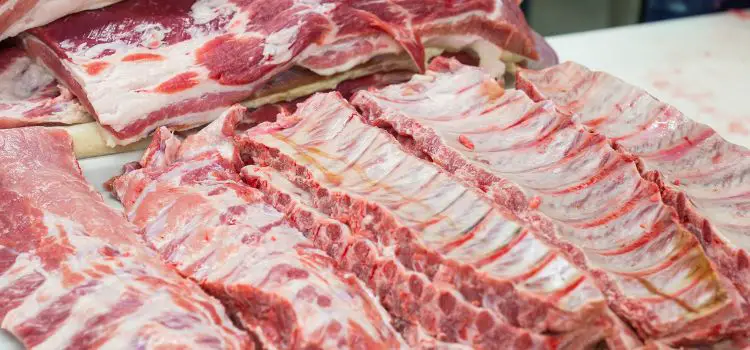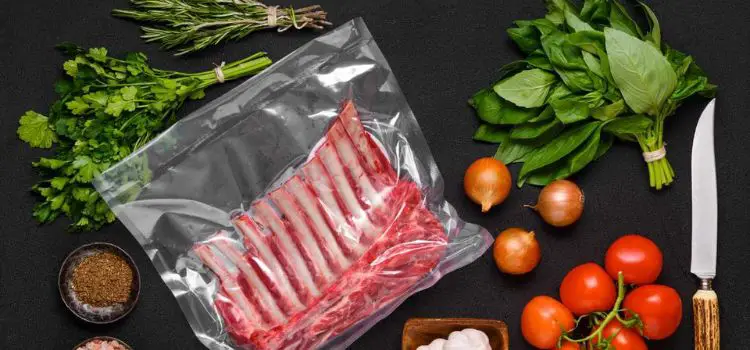As an Amazon Associate, I earn from qualifying purchases

Vacuum sealing has revolutionized food preservation, especially for meats like ribs. By removing air from packaging, vacuum sealing significantly extends the shelf life of food products by preventing bacterial growth and oxidation.
For meat lovers, ensuring ribs remain tasty and safe to eat is paramount, and vacuum sealing offers a practical solution. Proper storage is crucial, as it preserves not only the flavor but also the texture of the meat, allowing you to enjoy your ribs as if they were freshly prepared.
Factors Affecting the Shelf Life of Vacuum-Sealed Ribs
Several factors influence how long vacuum-sealed ribs can last in the fridge. Understanding these factors can help maximize their freshness and safety.
- Quality and Freshness: The shelf life of vacuum-sealed ribs begins with the quality and freshness of the ribs themselves. Fresh ribs that are of high quality will naturally last longer than those that are nearing their expiration date. It’s essential to start with ribs that are fresh from the butcher or supermarket to ensure the longest possible preservation.
- Techniques and Equipment: Utilizing the right vacuum sealing techniques and equipment is critical. Ensure that the vacuum sealer you use is in good working condition, and that bags or rolls are suitable for vacuum sealing. Double-check the seal to make sure it’s airtight, as any air left inside can lead to spoilage. A proper seal prevents air and moisture from entering, which helps in maintaining the ribs’ freshness.
- Temperature: The temperature of your refrigerator plays a significant role in the longevity of vacuum-sealed ribs. Ideally, your fridge should be set at or below 40°F (4°C) to prevent bacterial growth. Additionally, consider the placement of the ribs in the fridge; storing them away from the door can help maintain a consistent temperature.
Recommended Storage Times
When it comes to storing vacuum-sealed ribs, there are general guidelines to follow to ensure they remain safe and delicious.
General Guidelines for Storing Vacuum-Sealed Ribs in the Fridge
In general, vacuum-sealed ribs can last in the refrigerator for up to two weeks. This extended timeframe compared to non-vacuum-sealed ribs is due to the lack of air, which slows down the growth of bacteria and mold.
Variations Based on Rib Type
Different types of ribs might have slightly varied storage times. Pork ribs, for instance, may last a bit longer than beef ribs due to differences in fat content and muscle structure. However, as a rule of thumb, it’s advisable to consume all vacuum-sealed ribs within two weeks for peak quality.
Tips for Ensuring Freshness

To get the most out of vacuum sealing, follow these tips for preserving your ribs effectively.
- Best Practices for Vacuum Sealing Ribs: Select a high-quality vacuum sealer and bags. Prior to sealing, pat the ribs dry with a paper towel to remove any excess moisture, which can affect the seal. Seasoning the ribs before sealing can also enhance flavor during storage.
- Optimal Fridge Conditions for Storage: Ensure your fridge is clean and runs at the ideal temperature. Storing vacuum-sealed ribs on a shelf rather than the door helps maintain a stable temperature. If your fridge has sections with varying temperatures, opt for the coldest part.
- Importance of Labeling and Dating Packages: Always label and date your packages before storing them. This practice not only helps you keep track of how long the ribs have been in the fridge but also prevents any confusion about which package to use first.
Signs of Spoilage
Despite the best efforts, there are times when ribs may spoil. Recognizing the signs can prevent foodborne illnesses.
Changes in Smell, Color, and Texture
Spoiled ribs can have a sour or unpleasant smell, a change in color (such as turning gray or greenish), and a slimy texture. These are clear indicators that the ribs are no longer safe to eat.
How to Safely Assess if Ribs Are Still Good to Eat
If you’re uncertain about the condition of your ribs, it’s best to err on the side of caution. A visual and olfactory inspection should be enough to determine spoilage. If anything seems off, it’s safer to discard the ribs than to risk illness.
Conclusion
Vacuum sealing ribs is a fantastic method for extending their shelf life while maintaining quality. By understanding the factors affecting longevity, following proper sealing techniques, and storing them in optimal conditions, you can enjoy flavorful, tender ribs without worry.
Embrace these practices to make the most out of your culinary endeavors and ensure your ribs remain fresh and delicious until you’re ready to savor them.
FAQ
How long are vacuum-sealed raw ribs good for?
Vacuum-sealed raw ribs can last up to two weeks in the refrigerator. The vacuum sealing process removes air, significantly slowing the growth of bacteria and preserving the freshness and quality of the ribs longer than traditional storage methods. Always check for signs of spoilage before consuming.
How long is vacuum-sealed food good for in the fridge?
The shelf life of vacuum-sealed food in the fridge varies by type. Generally, vacuum-sealed meats last up to two weeks, while fruits and vegetables may last one to two weeks. Vacuum sealing extends freshness by limiting exposure to air, moisture, and bacteria.
How long can I keep uncooked ribs in the fridge?
Uncooked ribs generally last about three to five days in the refrigerator when stored properly. For longer storage, vacuum sealing can extend their freshness to two weeks. Always store ribs in the coldest part of the fridge, and check for spoilage before cooking or consuming.
As an Amazon Associate, I earn from qualifying purchases